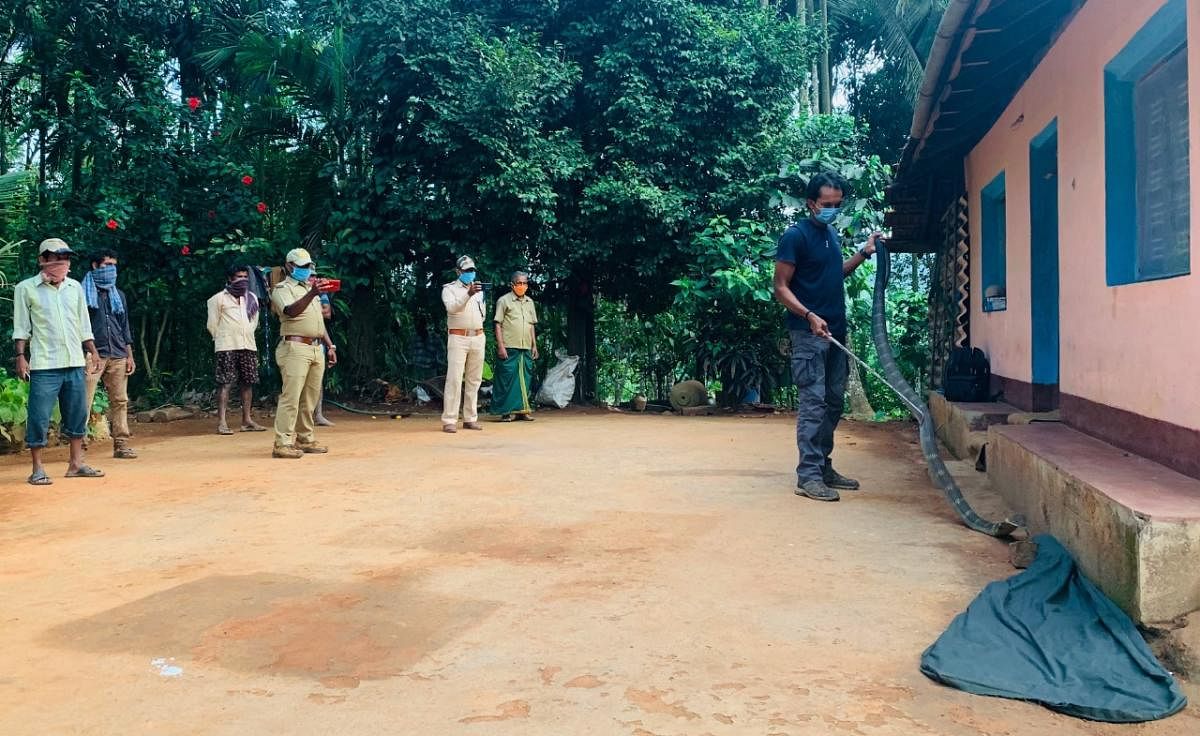
Mohammed Mustafa, popularly known as Snake Mustafa in Uppinangady in Dakshina Kannada district, had rescued over a thousand snakes. However, on April 18, slight negligence while trying to rescue a spectacled cobra from a fishing net without the essential tools resulted in a bite and his eventual death.
Similarly, a man at a temple in the M M Hills forest range in Chamarajanagar district mistook a venomous Russell’s viper for a python hatchling and tried to catch it with bare hands. A single bite by the snake and three hours later, the ‘snake handler’ was no more.
While Mustafa’s intentions were right, his overconfidence cost him dearly.
Social networking sites are flooded with several videos and photos where snake handlers, while showing off their ‘machoism’, have either been bitten by a snake or have ended up killing the snake.
As per experts and herpetologists, a lack of understanding about snakes and their behaviour, handling of snakes without required tools and the craze to gain instant popularity on social media have resulted in this trend.
Herpetologist Gerry Martin, who has done extensive study on Russell’s viper in rural areas and runs a project in Hunasuru, says, “Not all human-snake conflicts require handling of snakes by humans. All we need to do is give the snake enough space to ‘move on’.”
As per herpetologist and Kalinga Centre for Rainforest Ecology Director P Gowri Shankar, there are over 300 species of snakes in India of which only 10% to 15% are venomous. Among the 40-odd venomous snakes, the big four — spectacled cobra, Russell’s viper, saw-scaled viper and Indian krait— cause the highest number of human deaths.
1.2 million deaths
According to a study by the Centre for Global Health Research (CGHR) at the University of Toronto, Canada, India reported 1.2 million deaths (on an average 58,000 casualties annually) due to snakebite between 2000 and 2019. Rural India accounted for the highest number of deaths, the report says.
Gerry says, in rural India, most of the snakebites are accidental and take place while working in fields or while sleeping.
However, deaths due to snakebite while rescuing are completely avoidable if one gets the basics right. Ajay Giri, field director at the Agumbe Rainforest Research Station (ARRS), who has rescued hundreds of king cobras and other venomous snakes, says no person including any snake handler should touch any snake without a snake hook, a PVC pipe and a cotton bag.
Both Gerry and Ajay say one should treat every unknown snake as venomous. “Rescuing snakes is not adventure sports. Trying to kiss them on the hood, unauthorised extraction of venom and keeping snakes at home is not only dangerous but also a punishable offence under the law,” says Ajay.
“During every rescue operation, the handler should give utmost priority to safety of self as well as the snake. The handler should ensure that the snake is not agitated or hooding up in aggression. Without wasting much time, he should guide the snake to a pipe fitted to a bag, which acts like a burrow for the snake to ‘escape’,” explains Gerry.
Skilled profession
Gowri Shankar, who regularly conducts awareness workshops regarding snakes in urban and rural areas, says snake handling is a highly skilled profession and one should not venture without proper training.
He advocates that like Kerala, only certified persons should be allowed to handle snakes in Karnataka too. The forest department should conduct training camps for people who wish to rescue snakes.
Jose Louies, a Kerala-based herpetologist and founder of Indian Snakes, says ever since the state government began allowing only certified snake rescuers to handle snakes, there has been a reduction in ‘snake showmanship’ in Kerala. “Currently, the state has 373 certified active snake rescuers, who in the last eight months, have rescued more than 1,178 snakes. The forest department, through its app ‘Sarpa’ monitors every single rescue,” he said.